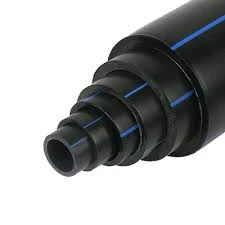okt . 14, 2024 08:12 Back to list
hdpe spec sheet
Understanding HDPE Specifications and Applications
High-Density Polyethylene (HDPE) is a widely used thermoplastic polymer that has garnered significant attention in various industries due to its durability, strength, and chemical resistance. This article delves into the specifications of HDPE, highlighting its properties, classifications, and applications.
HDPE is characterized by its high strength-to-density ratio, which makes it an ideal choice for applications requiring robust materials. Its molecular structure consists of long chains of polyethylene, which gives it a higher density compared to other types of polyethylene, such as Low-Density Polyethylene (LDPE). The specific density of HDPE typically ranges from 0.930 to 0.967 g/cm³, making it one of the more rigid types of polyethylene available.
Understanding HDPE Specifications and Applications
Another significant feature of HDPE is its resistance to impact and stress cracks. HDPE boasts excellent toughness, which is essential for products that endure heavy use or exposure to harsh environments. Its resistance to UV rays and various chemicals—such as acids and bases—further enhances its durability and makes it suitable for outdoor applications, including piping systems and irrigation tools.
hdpe spec sheet

Additionally, HDPE’s low moisture absorption rate and non-toxic nature contribute to its popularity in food packaging and storage applications, ensuring that it meets standards set for food safety. Its recyclability is also a crucial attribute; HDPE can be efficiently recycled and repurposed, contributing to environmental sustainability initiatives. In fact, the recycling symbol 2 is typically associated with HDPE, making it easily identifiable in the waste stream.
The applications of HDPE are vast and varied. In the packaging industry, HDPE is commonly used for producing containers, bottles, and jugs for household and industrial products. In construction, it is a popular choice for pipes and geomembranes due to its strength and resistance to soil chemicals. Moreover, HDPE is increasingly being utilized in the manufacturing of lightweight, durable outdoor furniture and playground equipment, thanks to its resilience and weather resistance.
In terms of specifications for HDPE grades, they can be categorized into different types based on their intended applications, each with unique properties. For instance, some grades are designed for high-performance applications that require enhanced pressure resistance, while others may focus on flexibility or lower processing temperatures.
In conclusion, HDPE is an incredibly versatile material with specifications that cater to a wide array of applications across different sectors. Its strength, durability, chemical resistance, and recyclability make it an essential component in today’s manufacturing and packaging industries. As technology advances, the potential for innovative uses of HDPE continues to expand, solidifying its role as a vital material in modern society. Understanding HDPE specifications not only helps manufacturers select the appropriate grade for their needs but also enables consumers to appreciate the material's benefits in everyday products.
-
Durable PP Rigid Sheet: Lightweight, Chemical Resistant Solutions
NewsAug.21,2025
-
PVC Grey Sheet for Extraction: Chemical Resistant & Durable
NewsAug.19,2025
-
Durable PVC Pipe Fittings for Plumbing & Irrigation Needs
NewsAug.18,2025
-
HDPE Steel Belt Reinforced Spiral Corrugated Pipe | High Strength
NewsAug.17,2025
-
HDPE Pipe Fittings: Durable, Leak-Proof Solutions
NewsAug.16,2025
-
Premium CPVC Sheet: High-Temp & Chemical Resistant Solutions
NewsAug.15,2025

